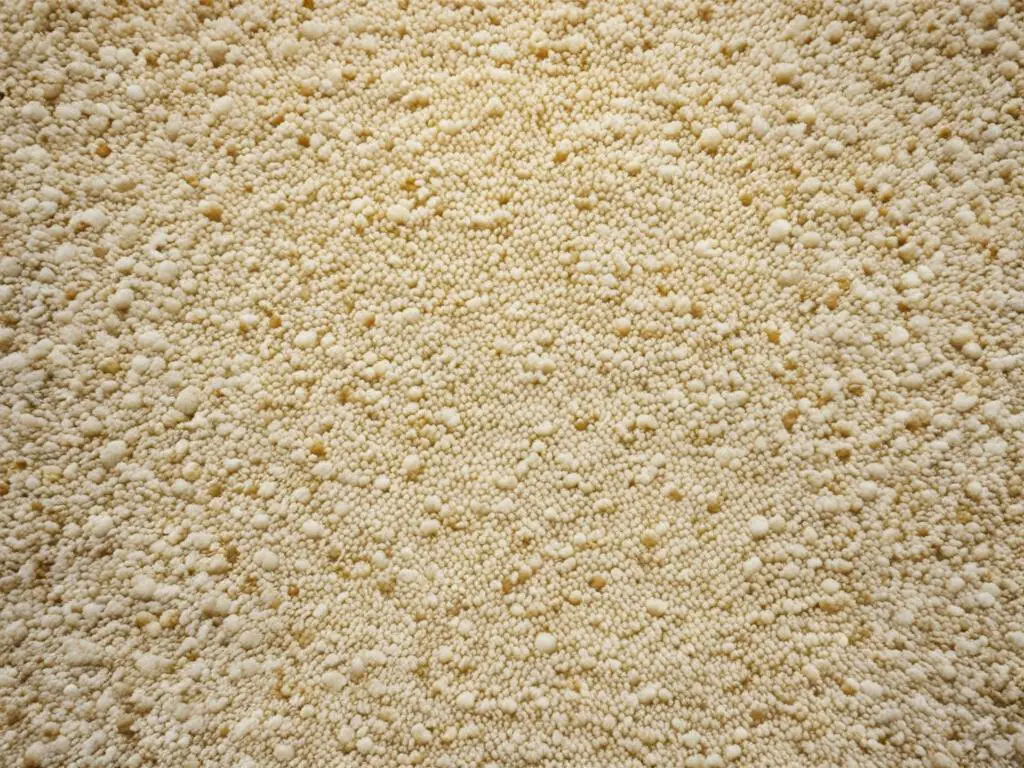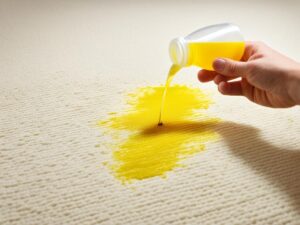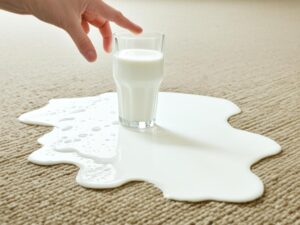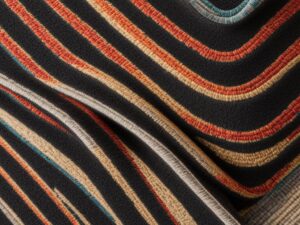Dry milk stains on your carpet can be quite stubborn and unsightly. Fortunately, with the right techniques and cleaning solutions, you can effectively remove these stains and restore the appearance of your carpet. In this article, we will provide you with easy-to-follow steps to tackle dry milk stains and ensure successful carpet cleaning.
When it comes to removing dry milk stains, time is of the essence. Acting quickly will prevent the stain from setting and make the cleaning process much easier. Let’s dive into the step-by-step instructions on how to remove dry milk stains from your carpet.
Key Takeaways:
- Blot up as much milk as possible using a clean cloth.
- Dampen the stain with cold water to prevent it from drying out.
- Create a cleaning solution using warm water and either liquid dish soap or vinegar.
- Apply the cleaning solution to the stain and blot with a clean cloth until the stain disappears.
- For persistent stains, consider using a mixture of water and ammonia.
Blot up the Milk and Dampen the Stain
When it comes to removing dry milk stains from your carpet, the first step is to blot up as much of the milk as possible. This initial action is crucial in preventing the stain from setting deeper into the fibers.
Using a clean cloth, gently apply light pressure to dab off the milk. Be careful not to rub or press it further into the carpet, as this can spread the stain and make it more difficult to remove.
After blotting, the next step is to dampen the stain with cold water. This helps to prevent the milk from drying out and setting into the carpet fibers. You can use a cloth or a spray bottle to apply the water directly to the stain, ensuring it is thoroughly dampened.
By blotting up the milk and dampening the stain, you are setting the stage for an effective cleaning process. The next section will cover the application of a cleaning solution to further remove the stain.
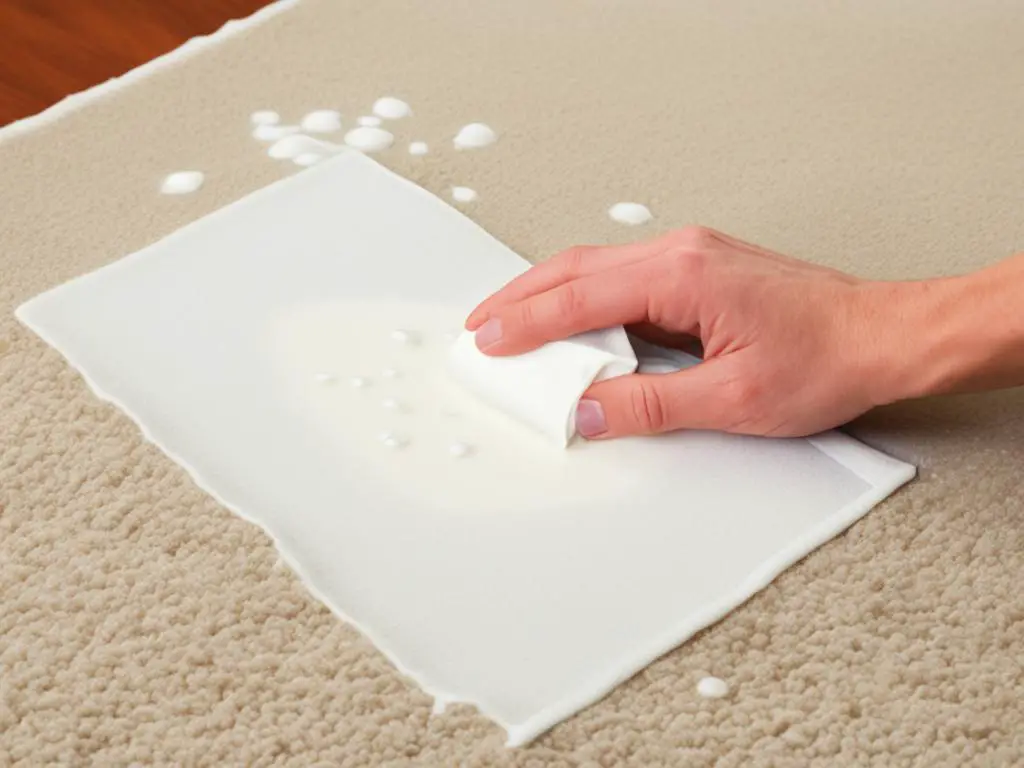
Apply Cleaning Solution and Blot the Stain
Now that you’ve dampened the stain, it’s time to tackle it with a cleaning solution. You can create a simple yet effective cleaning solution by mixing warm water with liquid dish soap or vinegar. The dish soap or vinegar helps to break down the milk stain, making it easier to remove.
There are two ways to apply the cleaning solution to the stain. You can either use a spray bottle to evenly distribute the solution or soak a cloth in the solution and gently dab at the stain. Whichever method you choose, make sure to apply the solution directly to the stained area.
When blotting the stain, start working from the outside edges and gradually move toward the center. This prevents the stain from spreading further and helps to minimize any potential damage to the carpet fibers. Apply light pressure when blotting to avoid smearing or pushing the stain deeper into the carpet.
Continue applying the cleaning solution and blotting until the stain is no longer visible or until the liquid running off the cloth is clear. This may require multiple applications and blotting sessions, especially for stubborn or larger stains.
Quick Tip:
Always remember to blot and not rub the stain. Rubbing can push the milk deeper into the carpet fibers and make the stain more difficult to remove.
Once you are satisfied with the results, it’s time to move on to the next step in the stain removal process. But before we proceed, let’s take a moment to understand the effectiveness of different cleaning solutions by comparing their characteristics in the table below:
| Cleaning Solution | Pros | Cons |
|---|---|---|
| Liquid Dish Soap | Gentle on the carpet | May not be as effective on stubborn stains |
| Vinegar | Natural and eco-friendly | Strong smell that may linger |
| Ammonia | Effective on persistent stains | Strong odor and potential harshness |
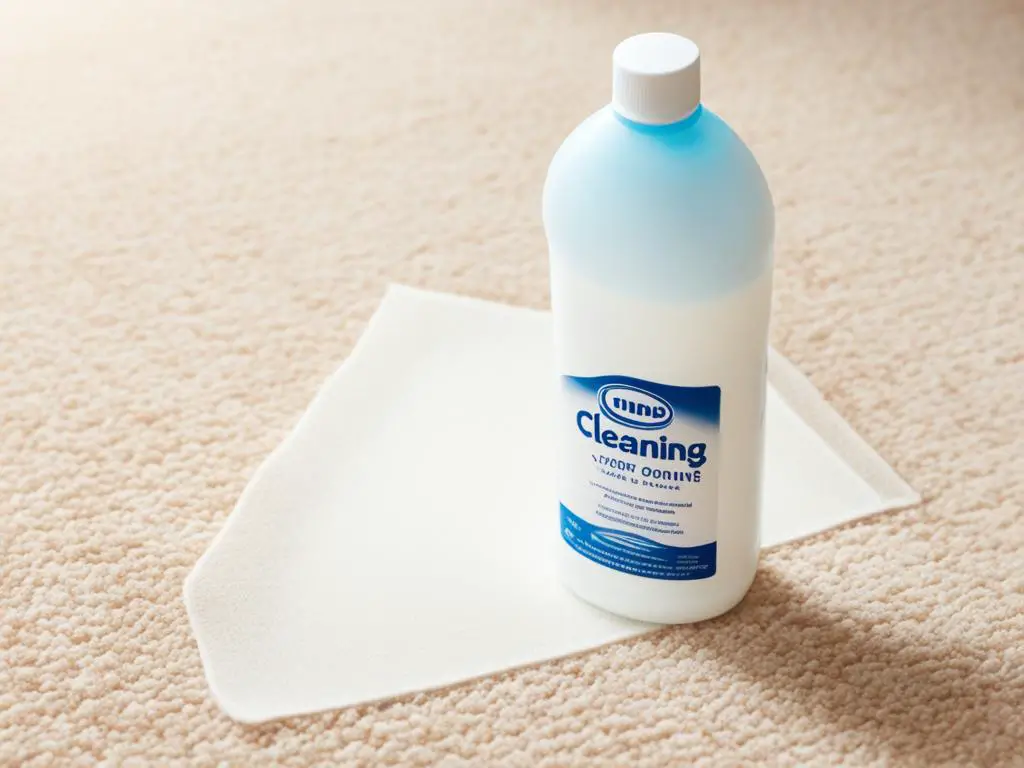
By considering the pros and cons of different cleaning solutions, you can choose the most suitable one for your specific carpet and stain type. Remember to always perform a patch test on a small, inconspicuous area of the carpet before applying any cleaning solution to the entire stain area.
Use Ammonia for Persistent Stains
If the milk stain on your carpet is persistent and difficult to remove, you can try using a mixture of warm water and ammonia. This powerful combination can help break down stubborn stains and make them easier to remove.
To create the cleaning mixture, combine equal parts warm water and ammonia in a small bowl. Ensure that you are using clear ammonia and not the sudsy household cleaner type.
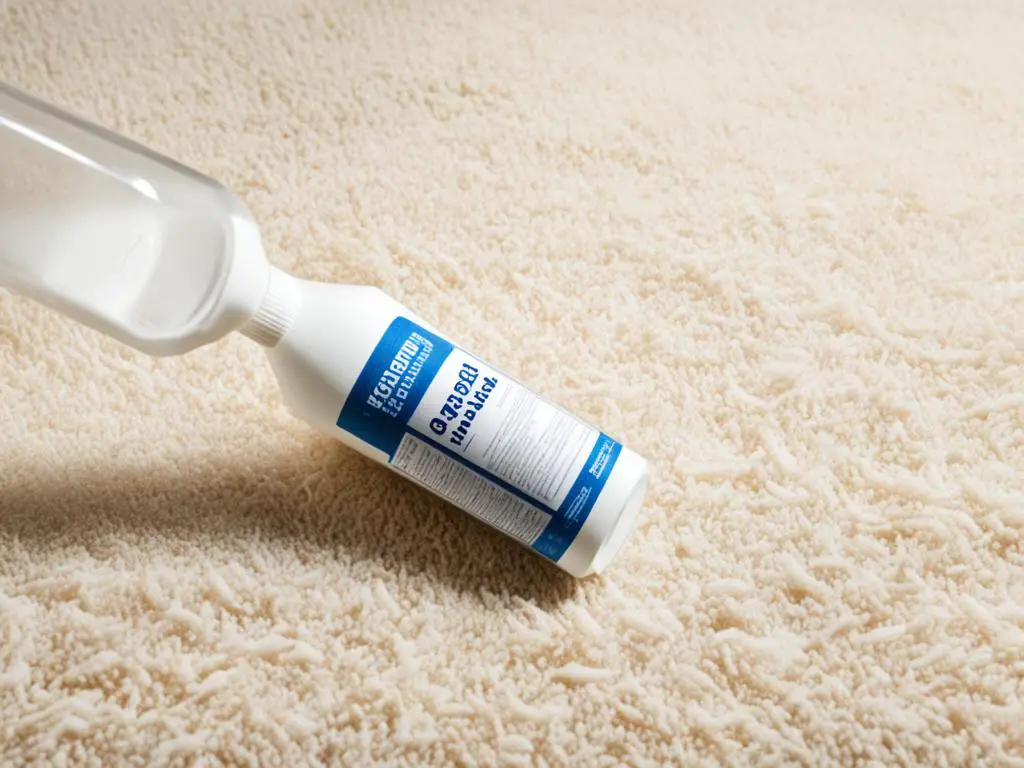
Once you have the mixture ready, take a clean sponge or cloth and blot the stain with the ammonia solution. Apply gentle pressure and work in small circular motions, focusing on the stained area.
Continue blotting until the liquid from the stain is absorbed by the sponge or cloth. Be careful not to oversaturate the carpet and avoid rubbing the stain, as this may spread it or push it deeper into the fibers.
Important: Do not mix ammonia with bleach or any products that contain bleach, as this can create harmful fumes.
After you have successfully removed the milk stain using the ammonia mixture, rinse the area with cold water to remove any remaining residue. Pat the carpet dry using a clean cloth or towel.
By using ammonia for persistent stains, you can effectively remove tough milk stains from your carpet and restore its appearance.
Conclusion
After reviewing the effective methods to remove dry milk stains from carpets, it is clear that acting quickly is crucial in preventing the stains from setting in. By blotting up the milk and dampening the stain with cold water, you can maintain the moisture and avoid the stain from drying out.
Using a cleaning solution made of warm water and either liquid dish soap or vinegar is an effective way to tackle the stains. By applying the solution and blotting the stain, you can gradually remove the milk residue from the carpet fibers. Remember to start from the outside edges and work your way inwards to avoid spreading the stain.
In cases where the milk stain proves to be persistent, a mixture of warm water and ammonia can be used. However, caution must be taken not to mix ammonia with any bleach products. By blotting the stain with this solution and rinsing it with cold water, you can successfully eliminate stubborn stains.
Overall, with the right techniques and a little patience, it is possible to effectively remove dry milk stains from carpets. By following these methods and taking immediate action, you can restore your carpets to their original condition, providing a clean and fresh environment for your home.
